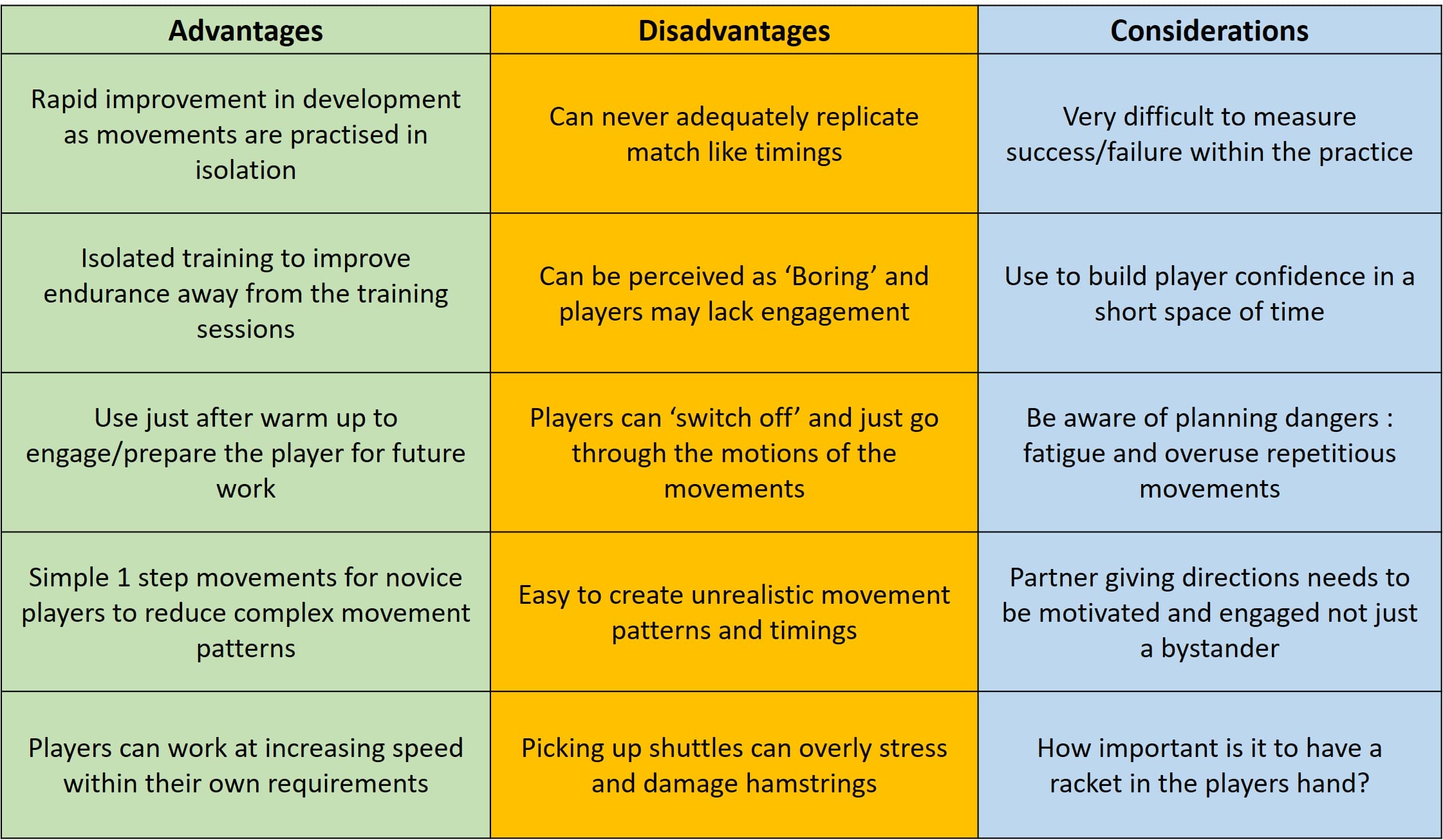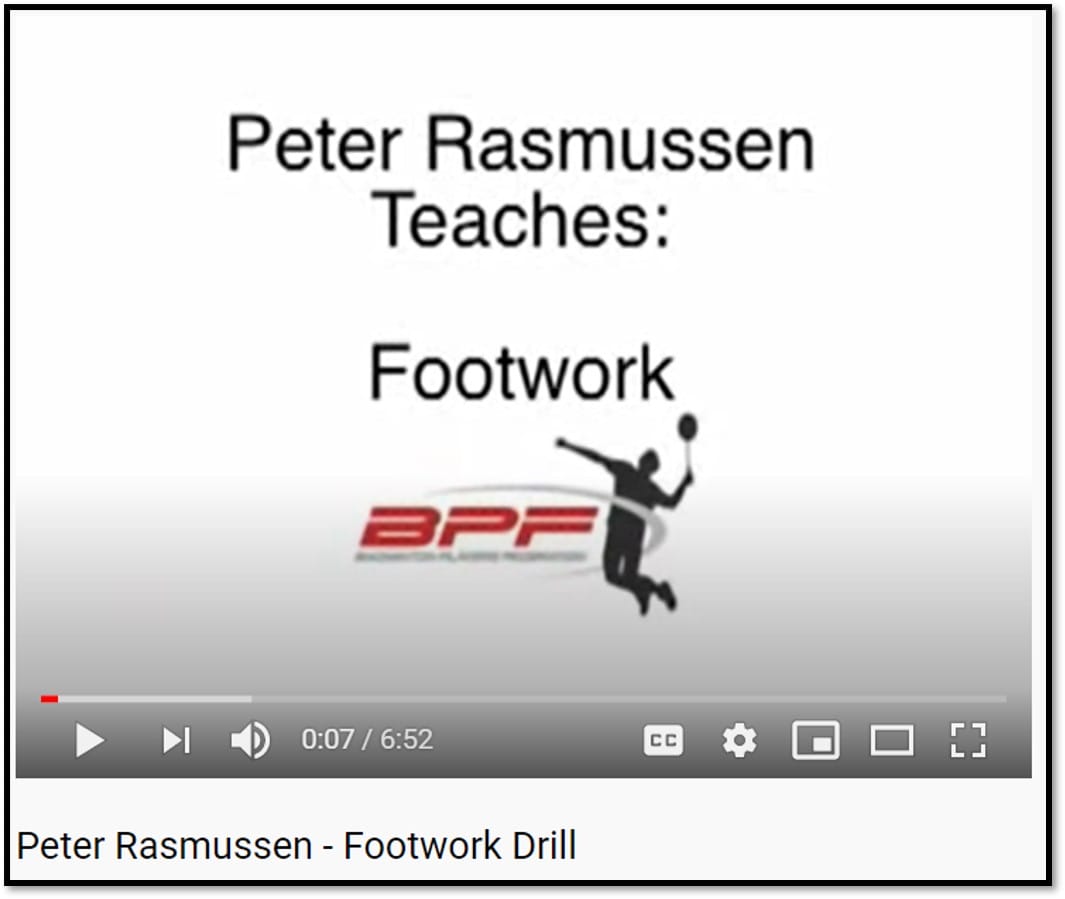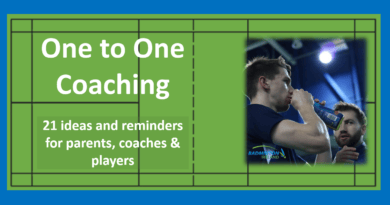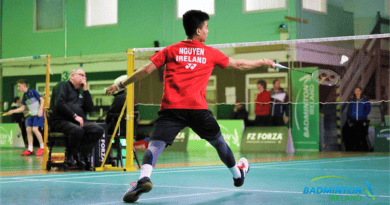Shadow badminton – all you need to know
What factors create a great shadow badminton (footwork) session
There are many components you can vary, so be prepared to start making choices
At the end of this post, I’ll explain the positives and negatives of shadow practice
I wonder if you will agree with my views
We will consider the benefits of shadow practice, what if any are the negatives & how to ensure that you maximise the benefits and avoid the pitfalls

– – – – – – – – – – – – – – – – – –
1 What is Shadow badminton
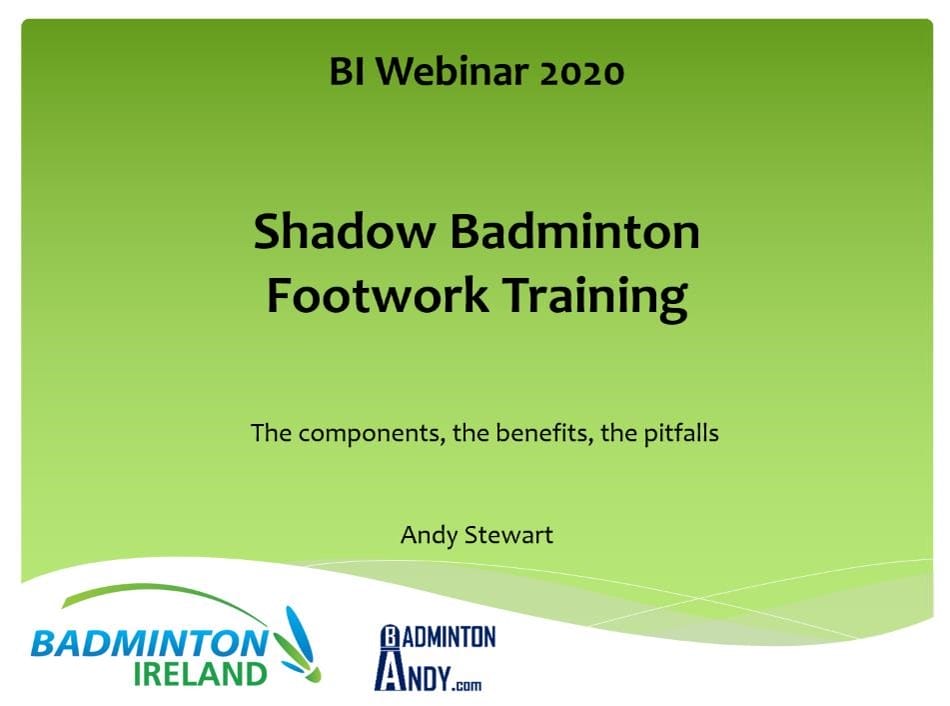
2 Why do this type of training
3 The different types
4 Components to consider: time, distance, intensity
5 What do you think about : Technical, Mental, EP
6 The Advantages & Disadvantage
.. Questions just for you
All the thoughts below are gathered from years of observations
– – – – – – – – – – – – – – – –
1. What is Shadow badminton
It’s a practice that requires you to move in a game like way without striking a shuttle
It’s not complex, you just move around the court (or an imaginary court) as you would in a game. Or, is it really that simple?
Have you considered
- why you use this practice: the goal, the desired outcome
- the different types
- the directions you move
- the patterns you make
- how you are directed
- the intensity
- the speed
- the duration
- and finally, what should you be thinking!
So maybe it’s not as simple as we first thought!
I would really like to show you a scientific paper or study on the effectiveness of shadow work to help technical and physical development … but I have never seen one!
– – – – – – – – – – – – – – – –
2. Why do this type of training
I’ve asked players, coaches and badminton people as to why they think shadow training should be included in a training plan.
Here are some of the reasons people told me they do shadow practices, they make interesting reading. If you were this person’s coach would you be happy or worried at their replies?
Go to the end of this post to read what I think and benefits I think you could find
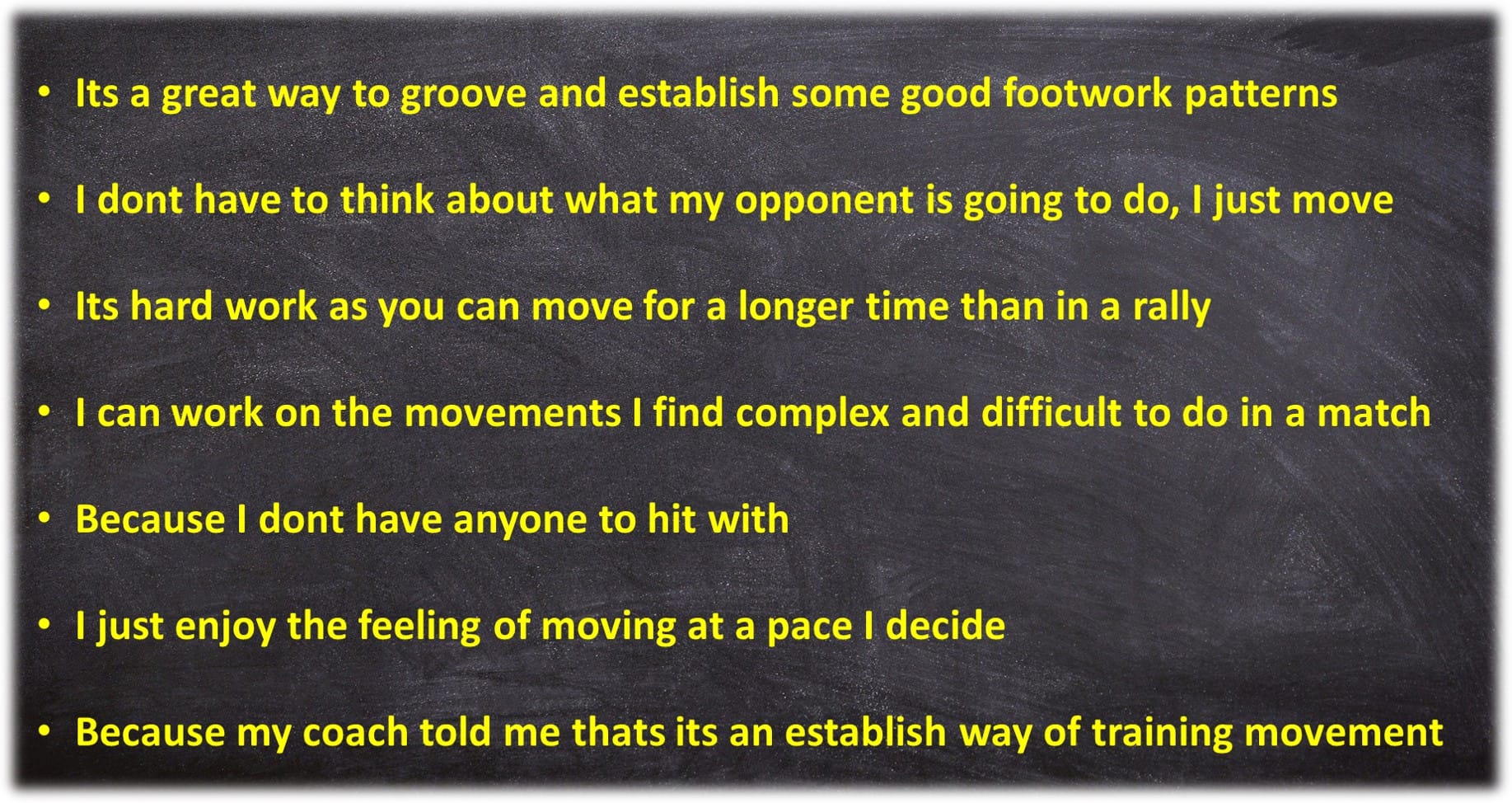
What do you think of these quotes, would you add any of your own?
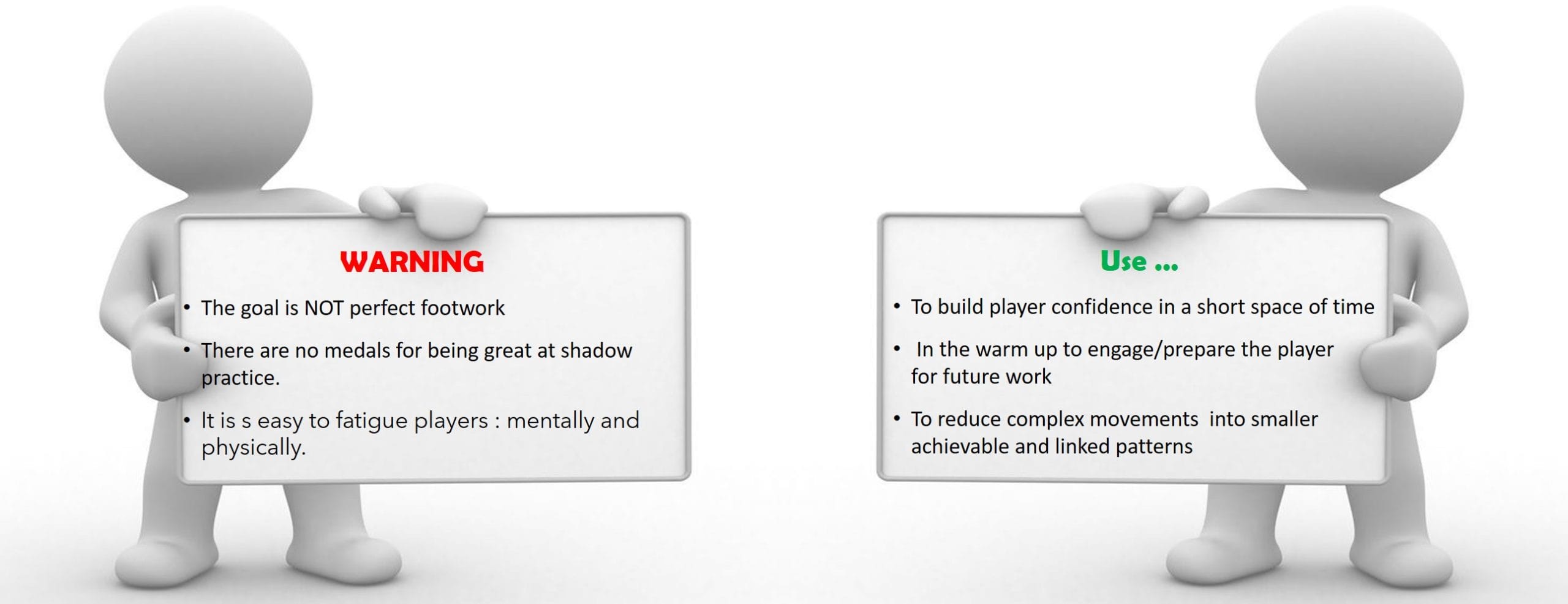
The aim isn’t to become great at shadow work in itself
Think about When & Why it’s being used
– – – – – – – – – – – – – – – –
3. The different types
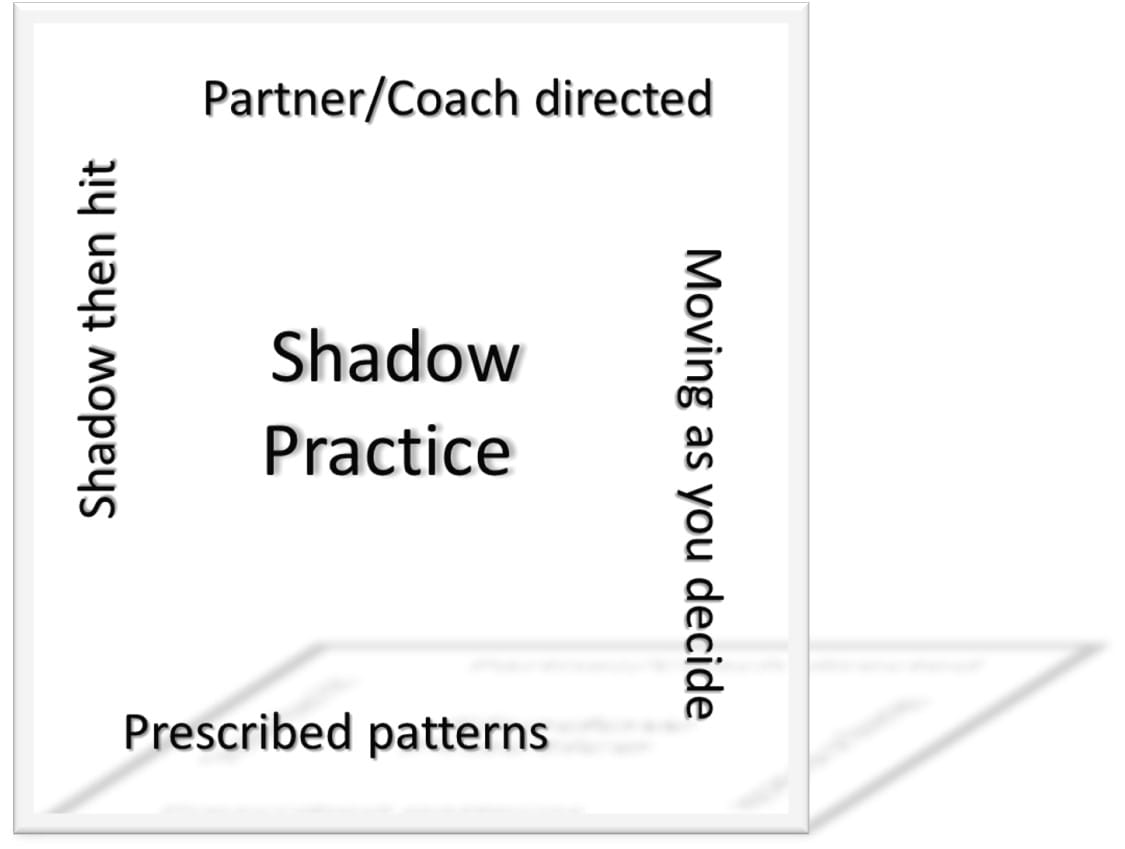 Prescribed patterns: you know exactly where you are moving to and from and repeat these patterns. These sequences can involve any number of points on the court. Often it varies from 2 points to upwards of 6. Any more than 6 makes it difficult for you to remember.
Prescribed patterns: you know exactly where you are moving to and from and repeat these patterns. These sequences can involve any number of points on the court. Often it varies from 2 points to upwards of 6. Any more than 6 makes it difficult for you to remember.
Partner/Coach directed: someone points or calls out where you are to move next and the speed you should move. Often these are longer sequences than the prescribed patterns.
Moving as you decide: it’s exactly that, you decide where to go on court. I recommend that you develope a great ‘game-like’ imagination 🙂
Shadow then hit: you perform a shadow stroke/movement then strike a shuttle that has been delivered by a feeder or is positioned on the court prior to starting. Be careful of picking shuttles up and moving them around the court, the stress on hamstrings, glutes and lower back may surprise you, it’s not a ‘badge of honour’ to be unable to walk the next day!
Shadow Speed Tests: equipment/targets are positioned within the court, you move to each ‘target; hit it and them to the next. The time taken is measured and the patterns can be varied, directed by sound or visually on a screen in front of you.
Have you tried these 5 different types, which do you prefer?
Do you know of others?
– – – – – – – – – – – – – – – –
4. Components to consider: time, distance, intensity
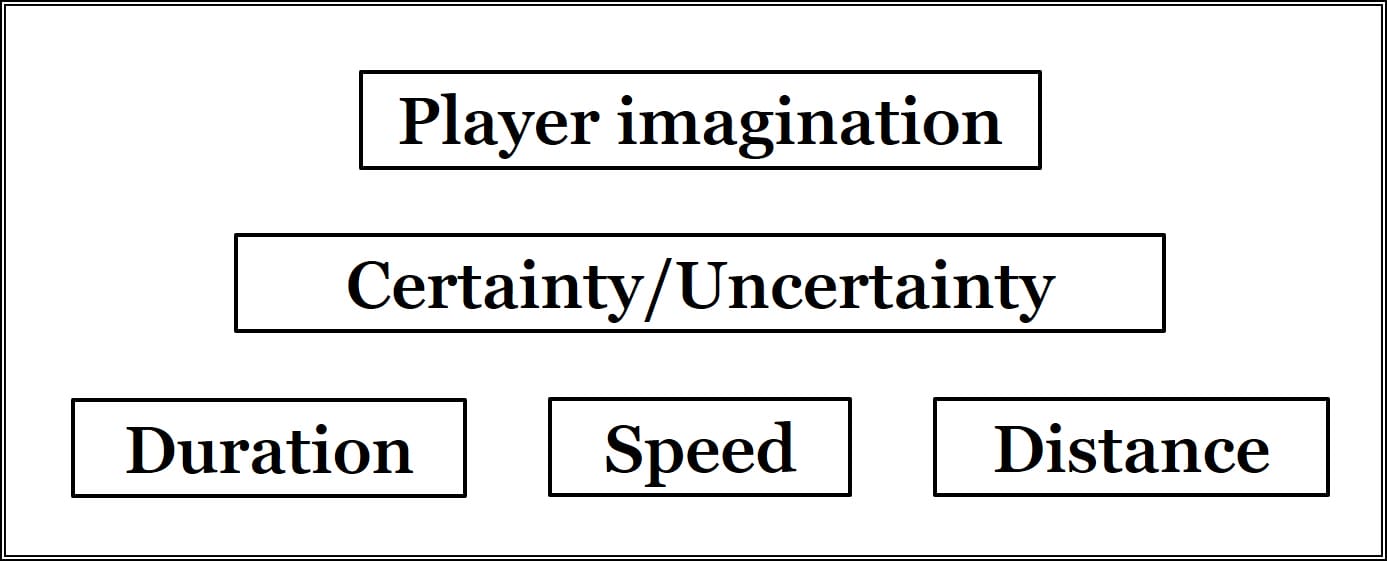
When designing your shadow badminton training I recommend that you consider these headings
Duration
Consider the duration of each individual rally and set, the time taken to complete each set of movements. Then the total time of work & rest that forms the session duration. The individual rally/elements could last from 10 secs to upwards of 2 minutes for one rally. I’ve also heard of a single session lasting over 20 mins without stopping (watch the video at the end of the post).
- What do you think is an acceptable range of reps and sets, is total duration a factor?
The speed of movement
I’ve seen movements done at game speed, much slower than game speed and also players moving as fast as possible from shot (without a shuttle) to shot. It can be difficult to maintain good form when speeds are increased. Partner directed movements can also complicate the speed element as it relies on the pointing/directing to be as game speed.
- Do you have any tips to ensure that the speed is controllable?
 The distance to be covered
The distance to be covered
This isn’t the total distance covered in a session, it’s the distance for each element of the movement.
A commonly used practice is to reduce the court distance to a 1 step shadow practice. Watch the video at the bottom by Peter Rasmussen
- What benefits do you see in 1 step shadow practice? Have you tried?
Certainty/Uncertainty
the question is, are movements known or unknown. Both are commonly used. Of course, if it’s a player self-directed shadow then all the movements are known. However, the player could imagine moving in a controlled way and then suddenly (as in a game) have to move quickly and in a different direction to that initially thought of.
Partner directed movements are almost unknown unless prescribed drills/routines are used. Do you have good and bad partners who direct you around the court, are they as motivated as you?
- Are you sure that the uncertainty element is as in a game and that the partner directed movement makes sense?
Player imagination
may be the most important factor! I believe it is!
Without being able to create a rally situation in your mind (players & coaches) can you be sure that the practice is as effective as it should be. Game like imagination is not remembering where to go next or what footwork pattern to use (these may not even be desirable). Players can gain far more if they can visualise the rally, the situations, the emotions, their reactions, the successes, the failures.
- Coaches, how do you encourage your players to use their imaginations, what questions/conversations do you have?
Have I covered all the components and where would you rank ‘Player Imagination’ ?
– – – – – – – – – – – – – – – –
5. What do you think about: Technical, Mental, EP
When you are in the middle of your shadow practice what are you thinking about!
To just move around the court without thinking or imagining something is a waste of your time.
Yes, of course, you will get fitter (if you are moving fast enough and with duration) but will it help you in a match? A match that you need to win.
3 components to consider
 Technical
Technical
- The mechanics of how to move
- Which foot goes where and when
- The speed at which you will move to and from the strokes
- Where are your eyes looking
- Should you be holding a racket, does it matter?
EP
- Early Preparation of your racket, is this important?
- The situation on the court: defensive, attacking, waiting, exploiting, etc
- This is often overlooked in favour of speed
- Without Early Preparation, you could be changing your technique for the worse!
Mental
- What is happening in the rally you are pretending to replicate
- Can you start to love this exercise?
- Focus on believing that the technical/EP are perfect and feel how good this is!
I believe that the mental element is the most important component of all these 6 points!
– – – – – – – – – – – – – – – –
6. The Advantages & Disadvantage / Warnings / Considerations
– – – – – – – – – – – – – – – –
How would you answer these questions?
Should coaches use this practice?
- I believe that shadow badminton is something that players and coaches should use
- However, before considering sets and reps, ensure that players are motivated and understand the importance of imagination
- Be aware that improvements can come quickly, or seem to
- There can be a difference between being a great shadow badminton mover and a good mover in a real game rally
How effective is it for technical improvements?
- It’s not a magical practice that dramatically improves technique! … not if the measure of development is what happens in a game when decisions are required.
- The improvements seen are only part of the mastery. Yes, important parts but be aware that the timings are nearly always player-led (even with a ‘feeder’).
- It’s very easy to move without consideration for what is actually needed in a match: early racket preparation, eyes over the net, thoughts and plans in your head.
- Be aware that technical elements can easily be excluded from shadow practice in favour of just trying to move quickly and completing the Sets and Reps: be aware of your goal (speed, fitness, technical movement)
- Once the shuttle/contact/opponent is removed you should expect to see improvements in how the movement components are linked together. Be aware that this may not be seen in a match and may not even be apparent at the start of the next shadow session.
What durations should be used ?
- I’d recommend that you use rally length durations or just beyond them.
- However, what is the average length of a rally for that player?
- It may be shorter than you think and certainly isn’t 2 mins.
- I suggest that you start with either 10 seconds or between 4-6 points (movements)
Do longer shadow sessions produce better movement skills?
- Movements may improve but there is no guarantee that you will move efficiently in a game, in fact, they could do more harm than good.
- It may make your player slower, less technically efficient, reduce motivation, and reduce commitment to the practice!
- Build up the total session duration from just a few minutes to longer or much longer. Some HP players have sessions as long as 40 mins, others use less than 20 mins but at a higher pace.
- Be aware of all the elements and work towards a goal, please don’t just go through the motions!
Are there any hidden dangers
- If you are new to Shadow Badminton it could be tougher than you think! Be aware that you may start to move slower or perform all movements at the same pace. This doesn’t happen in a game.
- Your split-step preparation will not improve. Yes you will perform the movement but the timings are all in your control and not as in a match with an opponent…. have you taken the split-step challenge
- It is very easy to forget that you are trying to replicate real rallies: be aware of combining movements that just would not happen in a real match. I’ll leave you to examine the movement that you do and decide how real they are.
- Physical developments will happen. However, watch out for repetitive movements that challenge the same muscles and joints repeatedly. It’s a balance between duration/intensity/speed vs overuse/muscle fatigue/injury
How to avoid the pitfalls
- Replicate real movements: please don’t just move from one part of the court to another if it’s not a movement that could happen in a real match. Consider what movements you are actually doing
- Be aware of overuse and repetition: it is possible to become injured doing shadow footwork sessions. The volume of lunging, bending and landing, can take its toll on your body without your realising. Keep total durations smaller than you think. Look after your feet and ankles, especially if the surface is not one you’d play on. (ie sand)
- Mental fatigue is real: players can start to dislike, even hate this type of training. However, it is useful and needs to be understood. Think about what you are doing, use your imagination, and build up both your physical and mental endurance.
- It may harm your technique: you may not agree with this, as perfect shadow badminton can look awesome. However, as you fatigue or lose focus, strange racket preparations can happen. These become habits and transfer into match play. Also, be aware that the timing of your movements and strokes is dictated by you from your imagination, how close is this to a real game?
- Ensure you hit shuttles often, far more than you practice footwork alone.
– – – – – – – – – – – – – – – –
Creating a great shadow badminton footwork session
- Understand the movements
- Use a racket and ensure you have E.P.
- Build up your mental and physical endurance
- Don’t just go through the motions at a comfortable speed
Top tip to improve Shadow practice
Use your imagination
Without motivation & an enthusiastic mind, the practice will be far from effective, possibly not even worthwhile

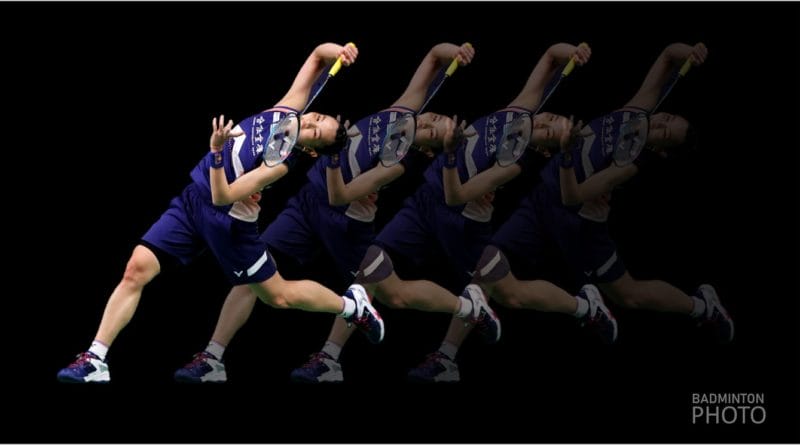
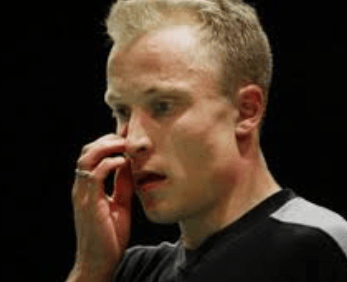
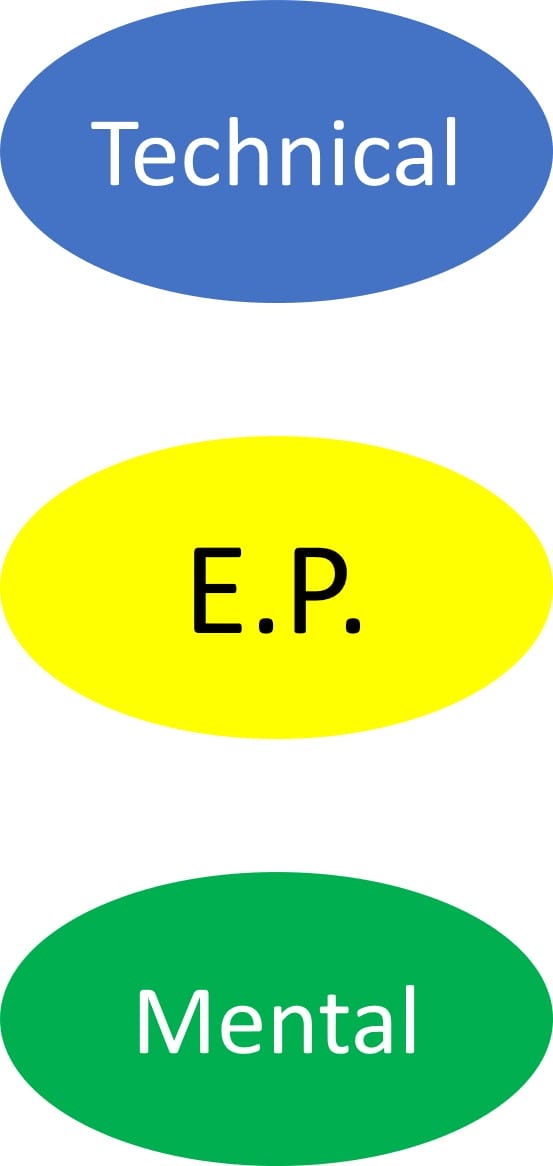 Technical
Technical